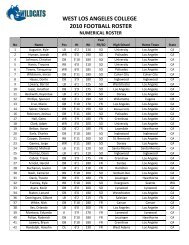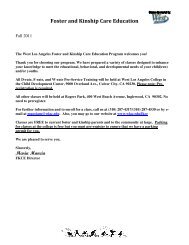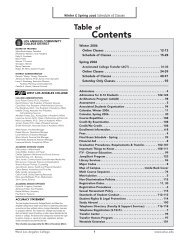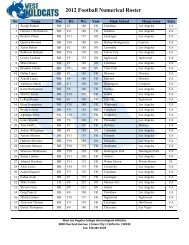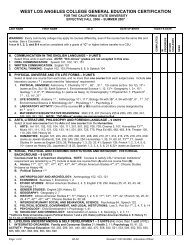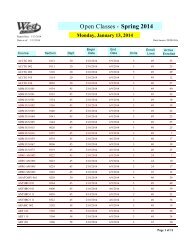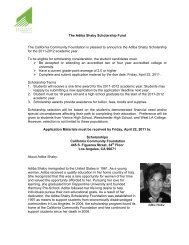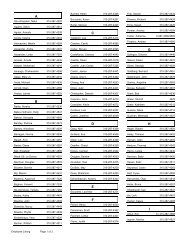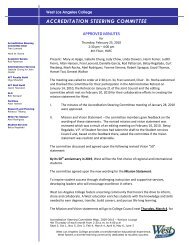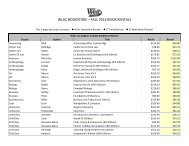MATH 227 STATISTICS FINAL EXAM - West Los Angeles College
MATH 227 STATISTICS FINAL EXAM - West Los Angeles College
MATH 227 STATISTICS FINAL EXAM - West Los Angeles College
Create successful ePaper yourself
Turn your PDF publications into a flip-book with our unique Google optimized e-Paper software.
25. In the simple linear regression model y = β0 + β1x, β<br />
1<br />
can be interpreted as the amount<br />
y will be expected to change when the value of the predictor variable x is increased by one unit.<br />
26. When a scatterplot is used to graph a bivariate data set, the variable plotted on the y-axis is<br />
often called the response variable while the variable plotted on the x-axis is called the predictor<br />
(explanatory) variable.<br />
27. In Hypothesis Testing, a small p-value indicates that the observed sample results are<br />
inconsistent with the null hypothesis.<br />
28. The null hypothesis should be rejected when the p-value is larger than the significance level<br />
of the test.<br />
29. A simple linear regression model y = β0 + β1x, β<br />
0<br />
represents the probability of type II error<br />
when performing a hypothesis test for β<br />
1<br />
.<br />
2<br />
30. The Chi-Squared χ test statistic is used to test independence between categorical data sets.<br />
31. In testing the utility of a simple linear regression model, the test statistic is a t − ratio .<br />
2<br />
32. In categorical data analysis, a small value of the observed test statistic χ indicates that the<br />
observed cell counts are reasonably similar to those expected when H 0 (categories are<br />
independent) is true.<br />
33. Categorical data used in a test for independence is often summarized in a two-way<br />
contingency table.<br />
34. The expected cell count for the row 1 and column 1 entry in a contingency table is equal to<br />
the product of the row 1 and column 1 “marginal” totals.<br />
35. Two outcomes are independent if the chance that one outcome occurs is unaffected by<br />
knowledge of whether or not the other occurred.<br />
36. Binomial and Poisson random variables are all examples of discrete random variables.<br />
4



